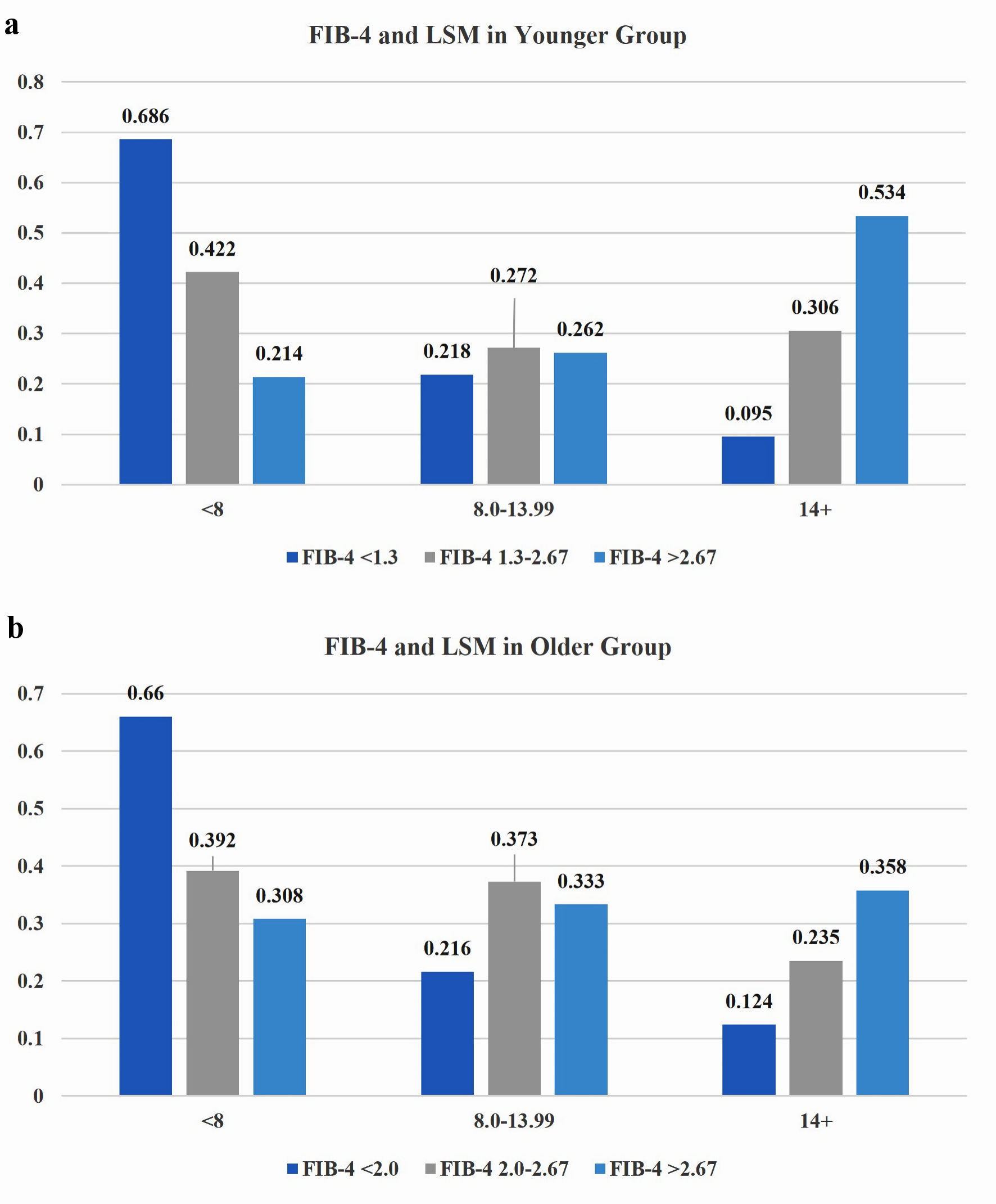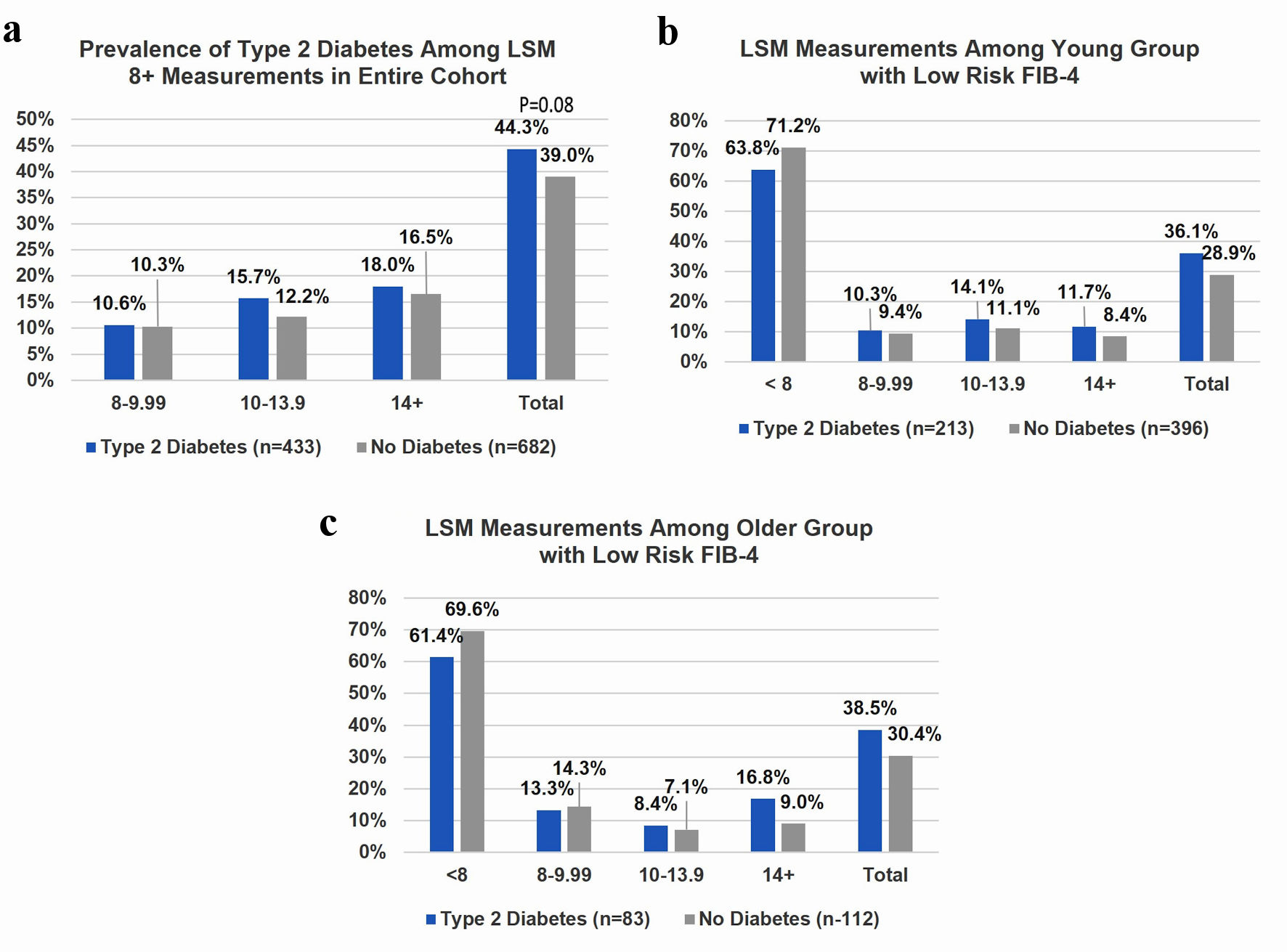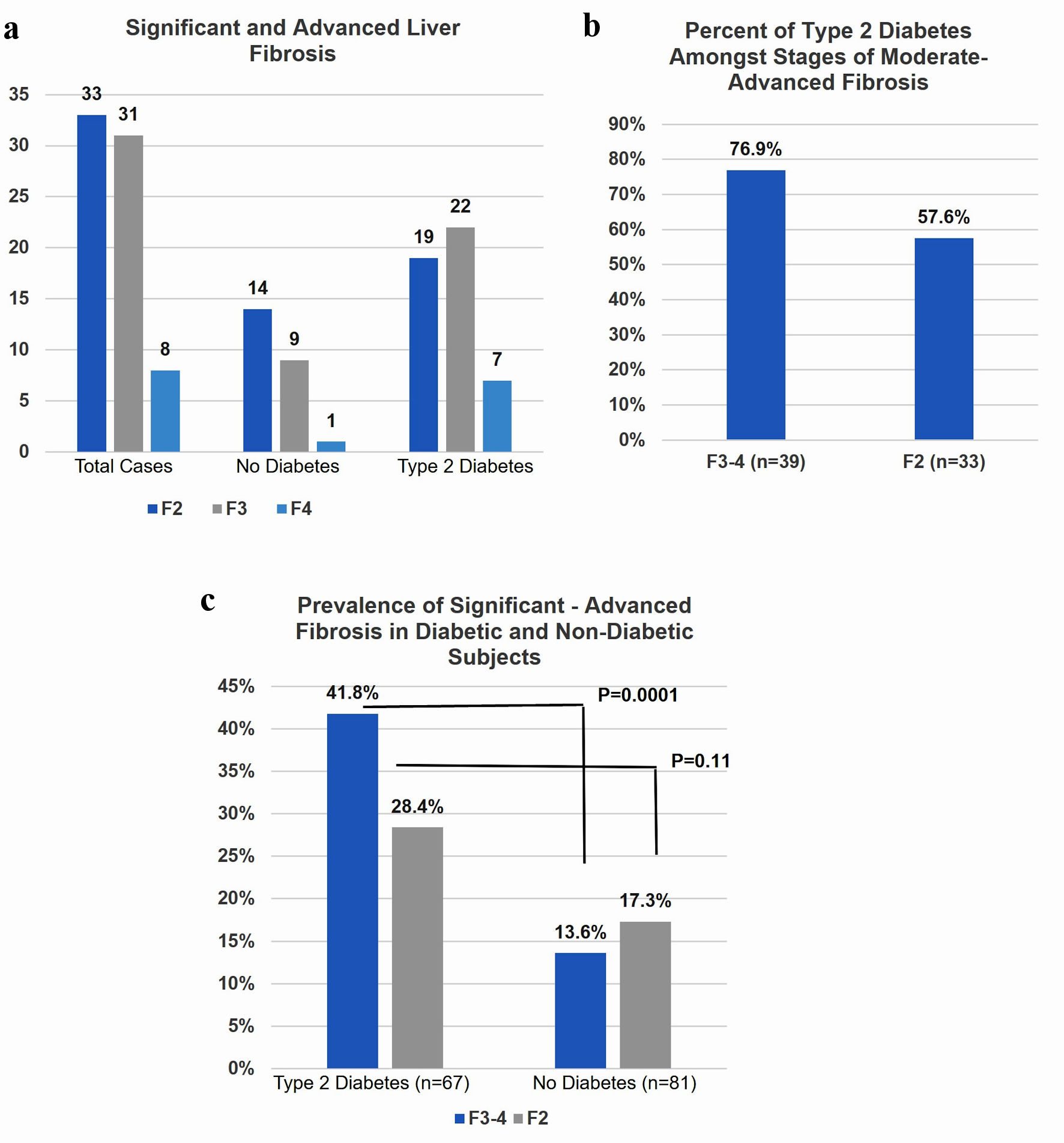
Figure 1. Among young adults, 31.4% (a), and among older adults, 34% (b), with a low-risk FIB-4, have significant to advanced LSM values. There is a significant stepwise decrease for FIB-4 scores for LSM < 8 kPa and increase in FIB-4 score for LSM 14+ kPa in both the young and old adult cohorts. The 8 - 13.99 kPa group have an equal distribution of FIB-4 scores in both age groups. LSM: liver stiffness measurement; FIB-4: fibrosis-4 index.

Figure 2. (a) In the entire cohort of subjects (n = 1,115) with and without diabetes and significant LSM (8+ kPa), no statistical differences were noted in either the total (P = 0.08) or any of the individual LSM categories. (b) Thirty-one point four percent of young adults with a low-risk FIB-4 (n = 609) have significant to advanced LSM values, and the proportion was similar to older group. There was no significant difference between LSM measurements for younger diabetic and non-diabetic patients. (c) One hundred ninety-five older patients had low risk FIB-4 scores, and 34% of older subjects with a low-risk FIB-4 have significant to advanced LSM values. Older diabetic patients were more likely to have 14+ kPa despite a low risk FIB4 score. LSM: liver stiffness measurement; FIB-4: fibrosis-4 index.

Figure 3. (a) Seventy-two subjects underwent liver biopsy had F2+. (b) The majority of both F2 and F3-4 subjects had type 2 diabetes. (c) Diabetic patients were significantly more likely to have F3 and F4 on biopsy despite low risk FIB4 score compared to non-diabetic patients. F2: significant fibrosis; F3: advanced fibrosis; F4: cirrhosis.


